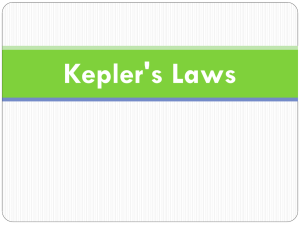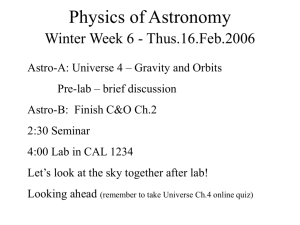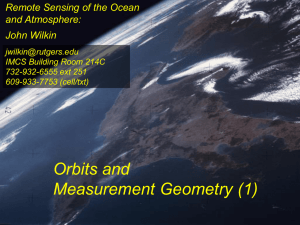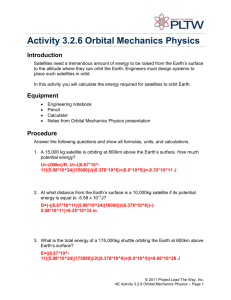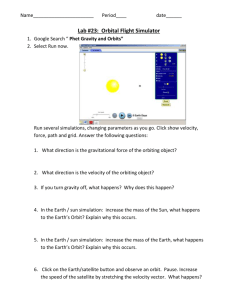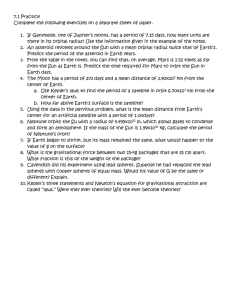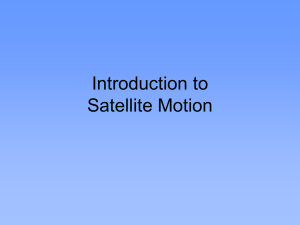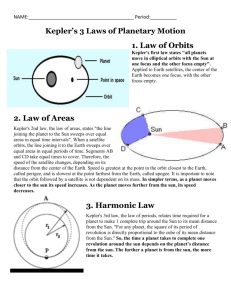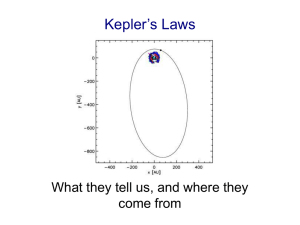TAP 403-2: Using Kepler`s third law
advertisement
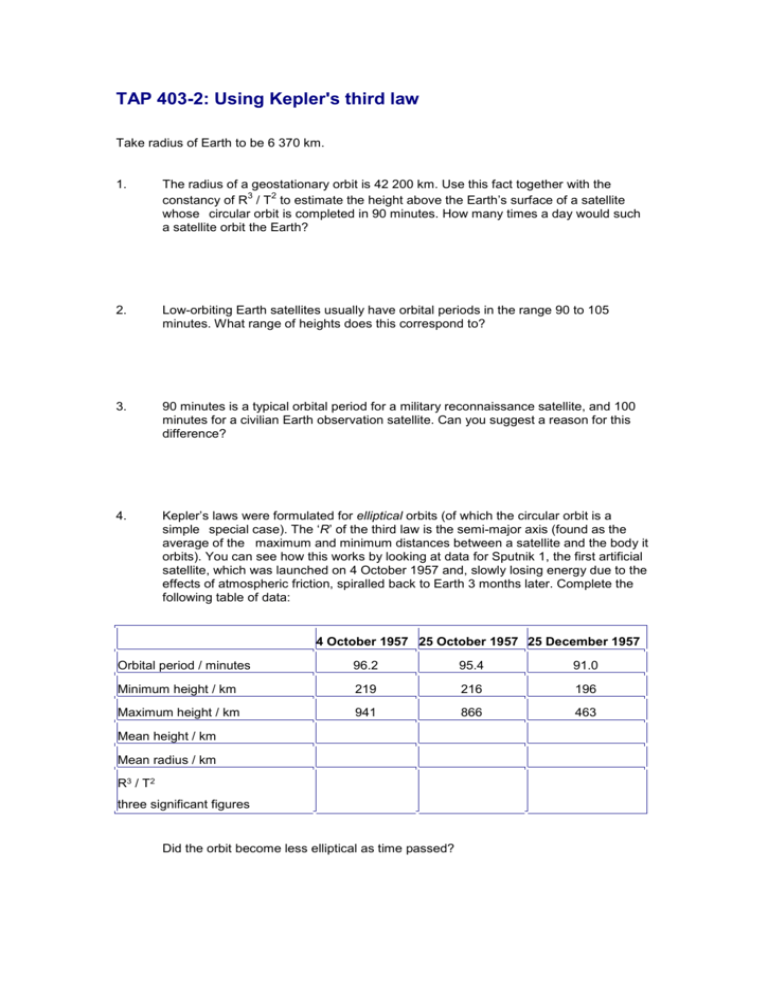
TAP 403-2: Using Kepler's third law Take radius of Earth to be 6 370 km. 1. The radius of a geostationary orbit is 42 200 km. Use this fact together with the 3 2 constancy of R / T to estimate the height above the Earth’s surface of a satellite whose circular orbit is completed in 90 minutes. How many times a day would such a satellite orbit the Earth? 2. Low-orbiting Earth satellites usually have orbital periods in the range 90 to 105 minutes. What range of heights does this correspond to? 3. 90 minutes is a typical orbital period for a military reconnaissance satellite, and 100 minutes for a civilian Earth observation satellite. Can you suggest a reason for this difference? 4. Kepler’s laws were formulated for elliptical orbits (of which the circular orbit is a simple special case). The ‘R’ of the third law is the semi-major axis (found as the average of the maximum and minimum distances between a satellite and the body it orbits). You can see how this works by looking at data for Sputnik 1, the first artificial satellite, which was launched on 4 October 1957 and, slowly losing energy due to the effects of atmospheric friction, spiralled back to Earth 3 months later. Complete the following table of data: 4 October 1957 25 October 1957 25 December 1957 Orbital period / minutes 96.2 95.4 91.0 Minimum height / km 219 216 196 Maximum height / km 941 866 463 Mean height / km Mean radius / km R3 / T 2 three significant figures Did the orbit become less elliptical as time passed? Practical advice If Kepler’s laws are not in the course specification: you may want to use only a few questions from this set. Answers and worked solutions 1. 42 200 km 3 R3 24 h 2 1.5 h 2 so R 3 42 200 km 3 1.5 h 2 24 h 2 6650 km. Therefore h 6650 km 6370 km 280 km. number of orbits 24 hours 16 1.5 hours 2. 3 R 90 2 T90 3 R105 2 T105 ( 6650 km) 3 (90 minutes) 2 3 R105 3 R105 (105 minutes) 2 (2.9 10 11 km 3 ) (1.1 10 4 minutes 2 ) 8.1 10 3 minutes 2 R 7330 km height 7330 km – 6370 km 960 km range is 280 km to 960 km 3. Low orbits give smaller image detail (is it a battlefield tank?); higher orbits give greater coverage and endurance (because there is less atmospheric friction). 4. 4 October 1957 25 October 1957 25 December 1957 Orbital period / minutes 96.2 95.4 91.0 Minimum height / km 219 216 196 Maximum height / km 941 866 463 Mean height / km 580 541 330 Mean radius / km 6950 6911 6700 3 2 R /T three significant figures 36 x 10 6 36 x 10 6 36 x 10 6 The Kepler ratio for each case is the same; the deviation from the mean height decreases, so the orbit becomes more like a circle. Average orbit time was 93.6 minutes. In 3 months (90 days) it made approximately 90 days 24 hours day –1 60 min hr –1 1400 orbits 94 min External reference This activity is taken from Advancing Physics chapter 11, 10D

